

Creative Writing Lesson Plans: Week One
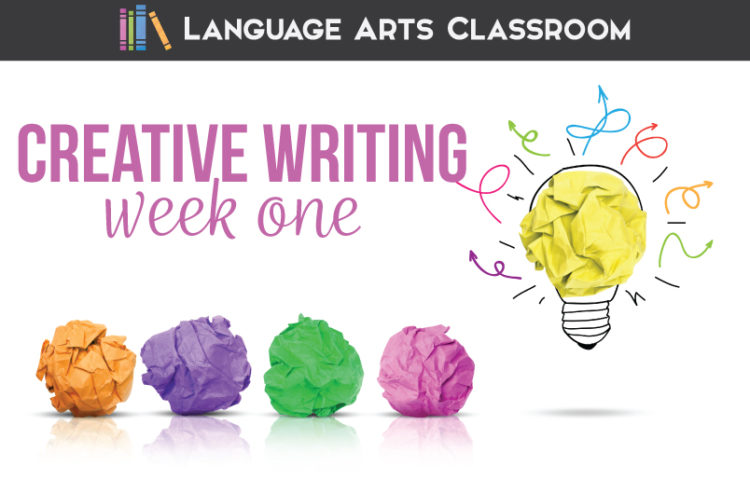
Looking for creative writing lesson plans? I am developing creative writing lesson ideas!
I’ve written and revamped my creative writing lesson plans and learned that the first week is vital in establishing a community of writers, in outlining expectations, and in working with a new class.
What are some good creative writing exercises?
Some good creative writing exercises include writing prompts, free writing, character development exercises, and fun writing games.
The first week, though, we establish trust—and then we begin powerful creative writing exercises to engage young writers and our community.
How can add encouragement in creative writing lesson plans?
I’ve found students are shy about writing creatively, about sharing pieces of themselves. A large part of the first week of class is setting the atmosphere, of showing everyone they are free to create. And! These concepts will apply to most writing lesson plans for secondary students.
Feel free to give me feedback and borrow all that you need! Below, find my detailed my day-by-day progression for creative writing lesson plans for week one.

Creative Writing Lesson Day One: Sharing my vision
Comfort matters for young writers. I’m not a huge “ice breaker” type of teacher—I build relationships slowly. Still, to get student writing, we must establish that everyone is safe to explore, to write, to error.
Here are some ideas.
Tone and attitude
For day one with any lesson plan for creative writing, I think it is important to set the tone, to immediately establish what I want from my creative writing students. And that is…
them not to write for me, but for them. I don’t want them writing what they think I want them to write.
Does that make sense? Limitations hurt young writers. My overall tone and attitude toward young writers is that we will work together, create and write together, provide feedback, and invest in ourselves. Older kiddos think that they must provide teachers with the “correct” writing. In such a course, restrictions and boundaries largely go out the window.
Plus, I specifically outline what I believe they can produce in a presentation to set people at ease.
The presentation covers expectations for the class. As the teacher, I am a sort of writing coach with ideas that will not work for everyone. Writers should explore different methods and realize what works for them. First, not everyone will appreciate every type of writing—which is fine. But as a writing community, we must accept that we may not be the target audience for every piece of work.
Therefore, respect is a large component of the class. Be sure to outline what interactions you find acceptable within your classroom community.
Next, as their writing coach, I plan to provide ideas and tools for use. Their job is to decide what tools work for their creative endeavors. My overall message is uplifting and encouraging.
Finally, when we finish, I share the presentation with students so they can consult it throughout the semester. The presentation works nicely for meet-the-teacher night, too!
After covering classroom procedures and rules, I show students a TED Talk. We watch The Danger of a Single Story by Chimamanda Adichie. My goal is to show students that I don’t have a predetermined idea concerning what they should write. This discussion takes the rest of the class period.
Establishing comfort and excitement precedents my other creative writing activities. Personalize your “vision” activities for your lessons in creative writing. Honestly, doing this pre-work builds relationships with students and creates a positive classroom atmosphere.
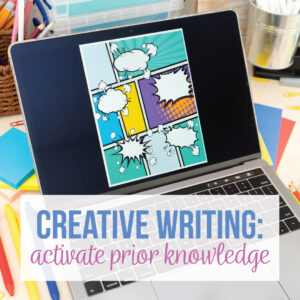
Creative Writing Lesson Day Two: Activating prior knowledge
Students possess prior knowledge concerning creative writing, but they might not consider that. Students should realize that they know what constitutes a great story. They might not realize that yet. An easy lesson plan for creative writing that will pay off later is to activate prior knowledge. Brainstorm creative, memorable, unforgettable stories with students. Share your thoughts too! You will start to build relationships with students who share the same tastes as you (and those that are completely different!).
Activation activity
During this activity, I want to see how students work together, and I want to build a rapport with students. Additionally, activating prior knowledge provides a smooth transition into other creative writing activities.
This creative writing activity is simple:
I ask students to tell me memorable stories—books, play, tv shows, movies—and I write them on the board. I add and veto as appropriate. Normally doing these classroom discussions, we dive deeper into comedies and creative nonfiction. Sometimes as we work, I ask students to research certain stories and definitions. I normally take a picture of our work so that I can build creative writing lessons from students’ interests.
This takes longer than you might think, but I like that aspect. This information can help me shape my future lessons.
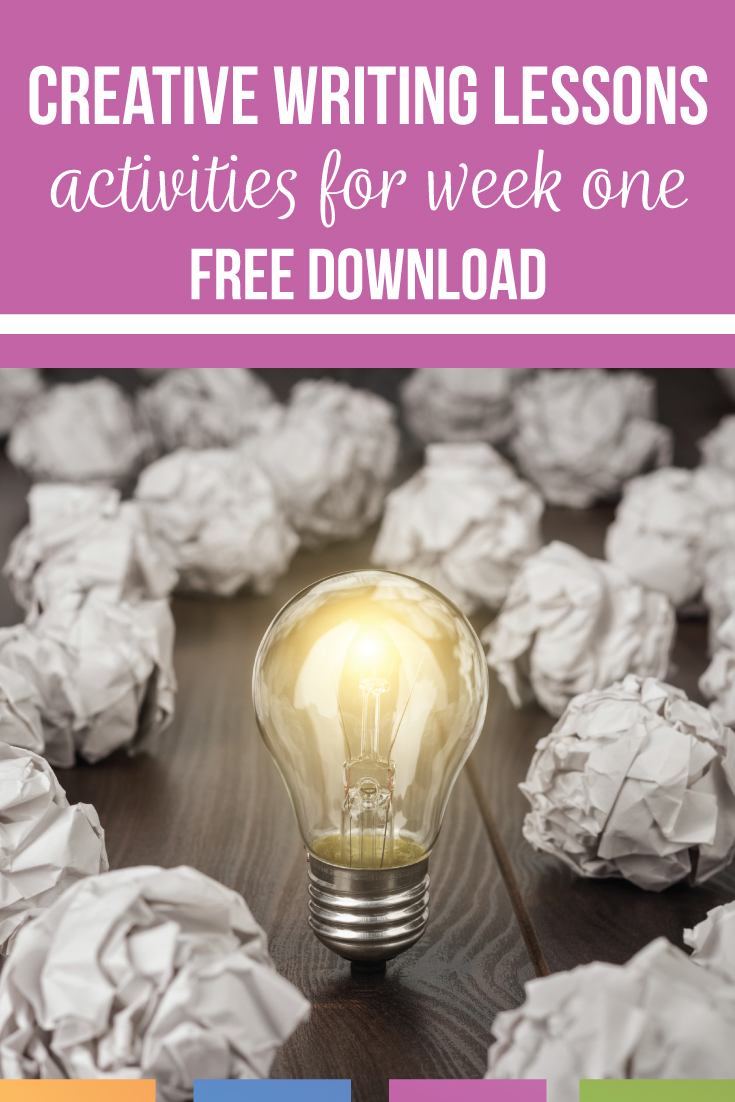
With about twenty minutes left in class, I ask students to form small groups. I want them to derive what makes these stories memorable. Since students complete group and partner activities in this class, I also watch and see how they interact.
Students often draw conclusions about what makes a story memorable:
- Realistic or true-to-life characters.
- Meaningful themes.
- Funny or sad events.
All of this information will be used later as students work on their own writing. Many times, my creative writing lessons overlap, especially concerning the feedback from young writers.
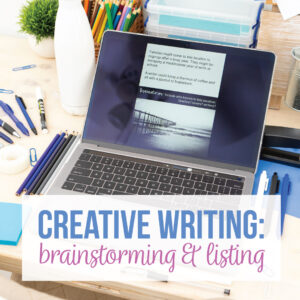
Creative Writing Lesson Day Three: Brainstorming and a graphic organizer
From building creative writing activities and implementing them, I now realize that students think they will sit and write. Ta-da! After all, this isn’t academic writing. Coaching creative writing students is part of the process.
Young writers must accept that a first draft is simply that, a first draft. Building a project requires thought and mistakes. (Any writing endeavor does, really.) Students hear ‘creative writing’ and they think… easy. Therefore, a first week lesson plan for creative writing should touch on what creativity is.
Really, creativity is everywhere. We complete a graphic organizer titled, “Where is Creativity?” Students brainstorm familiar areas that they may not realize have such pieces.
The ideas they compile stir all sorts of conversations:
- Restaurants
- Movie theaters
- Amusement parks
By completing this graphic organizer, we discuss how creativity surrounds us, how we can incorporate different pieces in our writing, and how different areas influence our processes.

Creative Writing Lesson, Days Four and Five: Creative Nonfiction
Students need practice writing, and they need to understand that they will not use every word they write. Cutting out lines is painful for them! Often, a lesson plan for creative writing involves providing time for meaningful writing.
For two days, we study and discuss creative nonfiction. Students start by reading an overview of creative nonfiction . (If you need mentor texts, that website has some as well.) When I have books available, I show the class examples of creative nonfiction.
We then continue through elements of a narrative . Classes are sometimes surprised that a narrative can be nonfiction.
The narrative writing is our first large project. As we continue, students are responsible for smaller projects as well. This keeps them writing most days.
Overall, my students and I work together during the first week of any creative writing class. I encourage them to write, and I cheer on their progress. My message to classes is that their writing has value, and an audience exists for their creations.
And that is my week one! The quick recap:
Week One Creative Writing Lesson Plans
Monday: Rules, procedures, TED Talk, discussion.
Tuesday: Prior knowledge—brainstorm the modeling of memorable stories. Draw conclusions about storytelling with anchor charts. Build community through common knowledge.
Wednesday: Graphic organizer.
Thursday and Friday: Creative nonfiction. Start narrative writing.
Students do well with this small assignment for the second week, and then we move to longer creative writing assignments . When classesexperience success with their first assignment, you can start constructive editing and revising with them as the class continues.

These creative writing activities should be easy implement and personalize for your students.
Would you like access to our free library of downloads?
Marketing Permissions
We will send you emails, but we will never sell your address.
You can change your mind at any time by clicking the unsubscribe link in the footer of any email you receive from us, or by contacting us at [email protected] . We will treat your information with respect. For more information about our privacy practices please visit our website. By clicking below, you agree that we may process your information in accordance with these terms.
We use Mailchimp as our marketing platform. By clicking below to subscribe, you acknowledge that your information will be transferred to Mailchimp for processing. Learn more about Mailchimp’s privacy practices.
Are you interested in more creative writing lesson ideas? My Facebook page has interactive educators who love to discuss creative writing for middle school and high school creative writing lesson plans. Join us!

creative writing creative writing activities
Walking by the Way
the road to inspired learning
Eight Free Creative Writing Lessons
February 17, 2012 by Ami 17 Comments
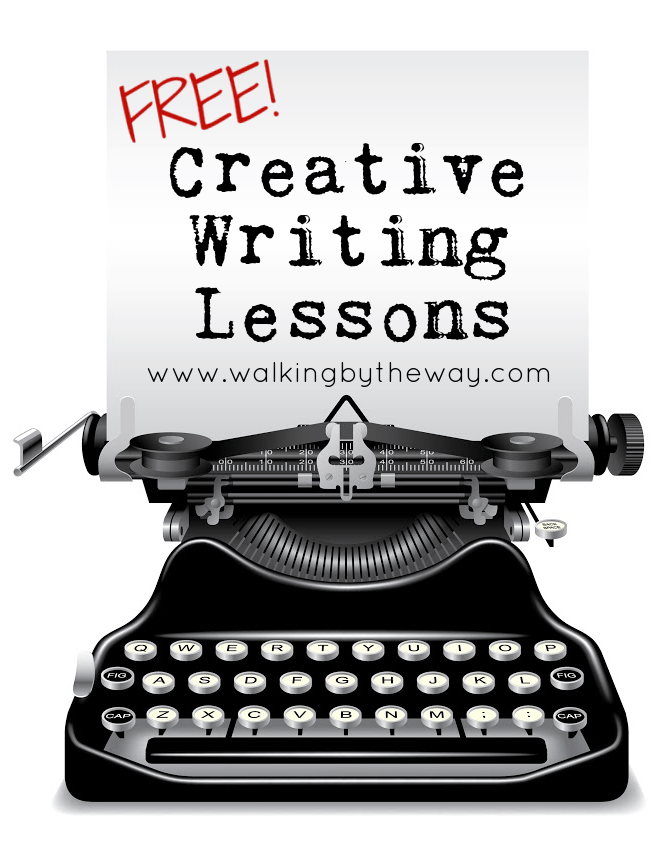
I know I throw around the word favorite all the time. But this is the truth: teaching creative writing lessons is my favorite.
I have taught creative writing enrichment for summer school students. I have taught creative writing in various homeschool settings and co-ops. I have taught big students and little students. And I love it.
Since I love to share homeschool co-op class ideas , I have compiled the creative writing lessons from a co-op class that I taught.
Creative Writing Lessons for a Homeschool Co-op Class
First, please remember that any teacher can use these creative writing lessons. You don’t need to be teaching homeschoolers. You can be a classroom teacher or a homeschool teacher at home with one student. You can even be a librarian who needs a fun program series.
Second, I used these creative writing lesson plans with upper elementary students (with maybe a few 7th graders thrown in). However, you can adapt and use them for older students or younger students!
Creative Writing Lesson Plans
Creative writing lesson one.
The first lesson focuses on cliché and metaphor. It prompts students to consider how words matter.
Grab lesson one here .
Creative Writing Lesson Two
The second lesson teaches students about sensory details: why they are important and how to include them in their writing. Students will begin using sensory details to evoke smells and sounds and sights.
Grab lesson two here.
Creative Writing Lesson Three
The third lesson introduces showing vs. telling. Students learn how to recognize authors who utilize showing, and students are able to articulate the difference between showing and telling.
Grab lesson three here.
Creative Writing Lesson Four
The fourth lesson teaches students how to capture images. We use examples of poetry and prose to discuss this important writing skill.
Grab lesson four here.
Creative Writing Lesson Five
The fifth lesson introduces the story elements of character and conflict.
Note: You may choose to split this lesson into two lessons since it covers two big elements. I only had nine weeks with my students, so I had to jam character and conflict together.
Grab lesson five here.
Creative Writing Lesson Six
The sixth lesson introduces the students to point of view and perspective. We have fun reading poems and using pictures to write descriptions from different points of view.
Grab lesson six here.
Creative Writing Lesson Seven
The seventh lesson puts everything we’ve learned together. I read the students some fractured fairy tales, and we watch some, too. Students then use the prewriting activities and their imaginations to begin drafting their own fractured fairy tales.
Grab lesson seven here.
Creative Writing Lesson Eight
The eighth lesson focuses on revision. After a mini-lesson, students partner up for peer editing.
Grab lesson eight here .
For our final class day, students bring revised work, and I host coffee shop readings. This is a memorable experience for students (and their teacher).
Creative Writing Lessons FAQ
Since posting these creative writing lessons, I have had lots of questions. I decided to compile them here in case you have the same question.
Q: What are copywork quotes? A: Copywork quotes are simply great quotes that students copy as part of their homework assignments. You can use any quotes about writing. I’ve included my favorites throughout the printable packs.
Q: Can I use this with a younger or older student? A: Absolutely! Just adapt it to meet the needs of your student.
Q: Can I use this for my library’s programming or my homeschool co-op class? A: Yes! I just ask that it not be used for profit.
Do you have any questions about teaching creative writing? What’s your biggest hang-up when it comes to teaching creative writing? I’d love to hear from you and help you solve the issue.

January 7, 2016 at 1:57 pm
Hi Theresa,
As long as you are not profitting from using them, they are yours to use! Enjoy! Wish I could be there to help facilitate all those young writers!
[…] Creative Writing Class […]
Leave a Reply Cancel reply
Your email address will not be published. Required fields are marked *
Save my name, email, and website in this browser for the next time I comment.
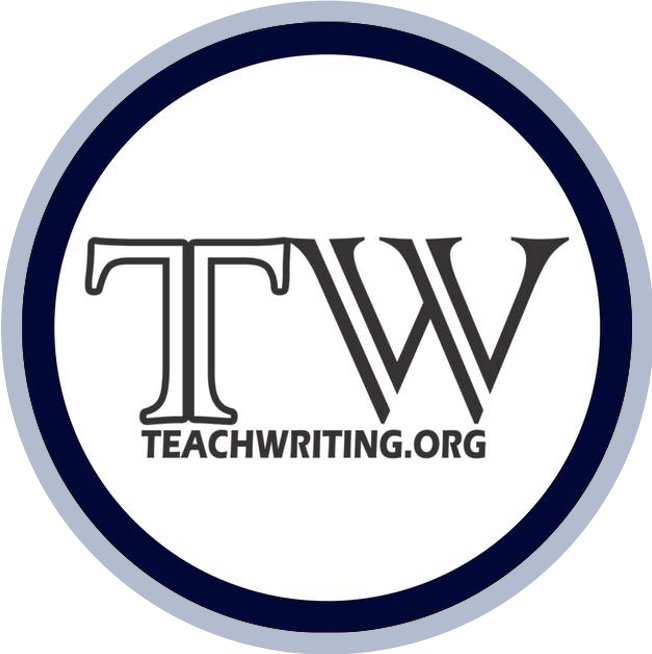
6 Creative Lessons to Inspire Secondary Writers
Looking for outside-the-box ELA teaching ideas? This roundup from TeachWriting.org has valuable ideas for everyone, covering everything from differentiation ideas…to engaging mini lessons…to maker spaces…and more!
Let’s dive into the ideas linked below to find inspiration you can use to engage middle and high school students. Here are six different posts containing creative lessons, resources, and activities to inspire secondary writers.
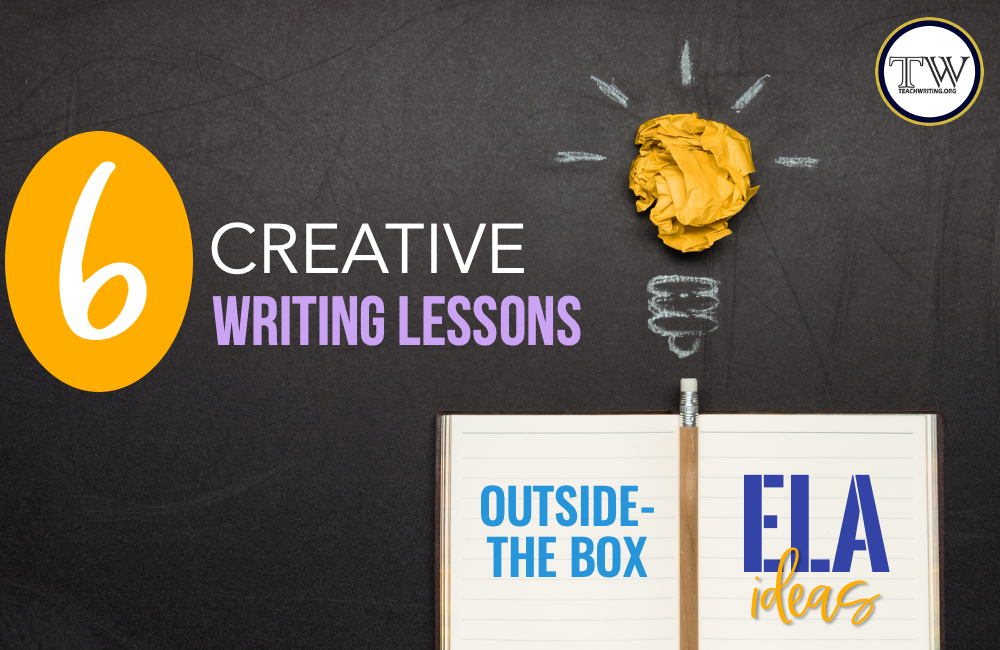
PICTURE-INSPIRED POETRY
Read about THIRTEEN ways Reading and Writing Haven uses pictures to inspire students to write poetry . Heading into a literary analysis, poetry, or creative writing unit? These ideas will be especially useful!
Ready to dive into poetry analysis and written response? Add some zest to your typical lesson plan with this visual one pager that scaffolds students analysis of key poem or song elements.
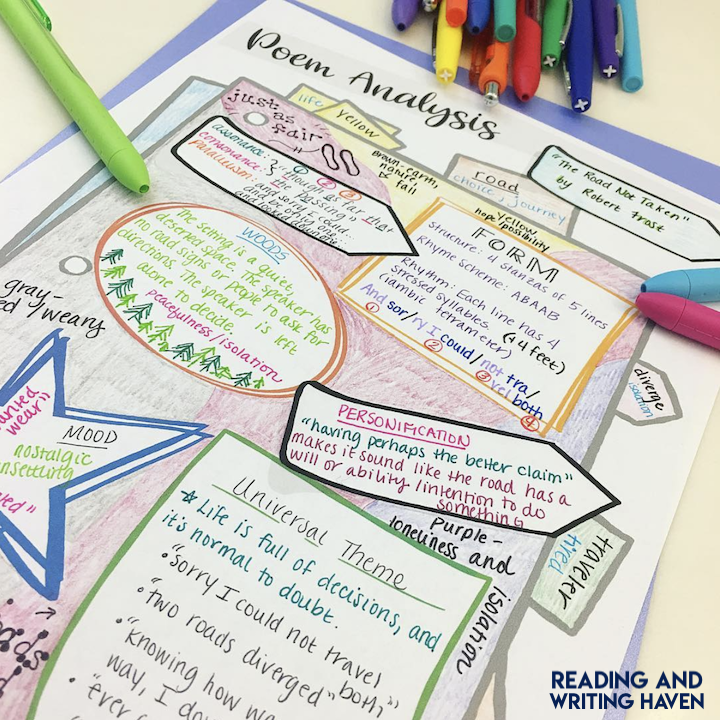
Scaffolded poetry analysis one pager from Reading and Writing Haven
SUSPENSE WRITING
In this post, Teach BeTween the Lines shares FOUR mini-lessons for teaching suspense writing , including character analysis, sensory images, literary devices, and more.
Dive into a spooky-type short story and character analysis with “The Most Dangerous Game.”
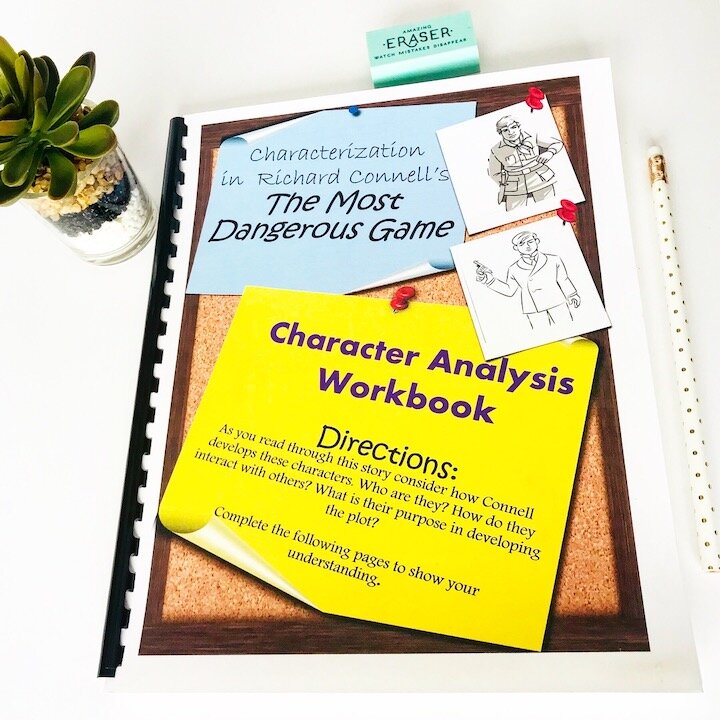
“Most Dangerous Game” Character Analysis Workbook from Teach BeTween the Lines
MAKER SPACE
This creative lesson to inspire secondary writers is a newer approach . Turn your writer’s workshop into a maker space with these unique ideas from Spark Creativity.
It’s true! Creative writing doesn’t have to be intimidating. Engage students with this short story maker assignment .
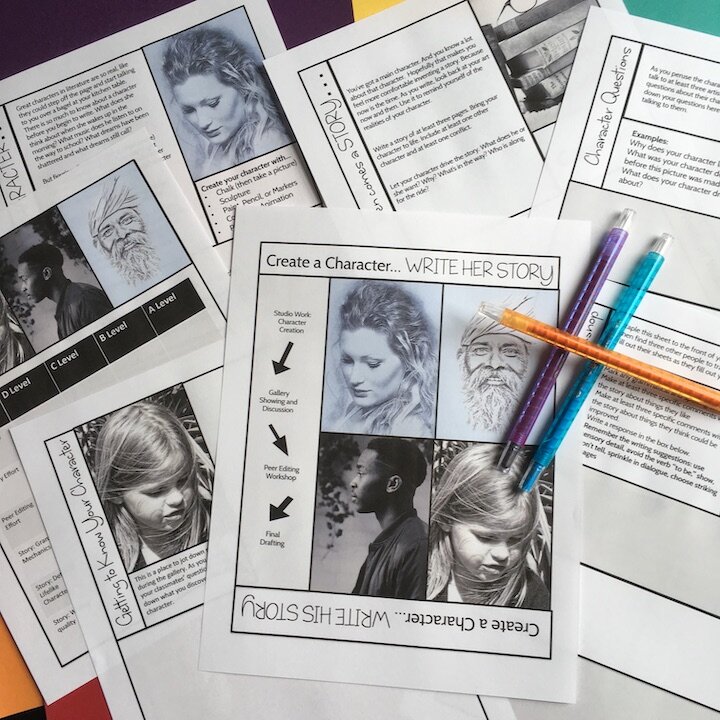
Short Story Maker Space Assignment from Spark Creativity
REFLECTION ACTIVITY
Bespoke ELA’s post is all about the recursive nature of writing. It goes all directions: forward, backward, and sideways. Support secondary writers by teaching them to be reflective throughout the process.
Use these FREE task cards by Bespoke ELA at the end of a Writer’s Workshop to emphasize that an essay can be edited and revised at any time. Communicate to students that writing is a continual, recursive process, not linear.
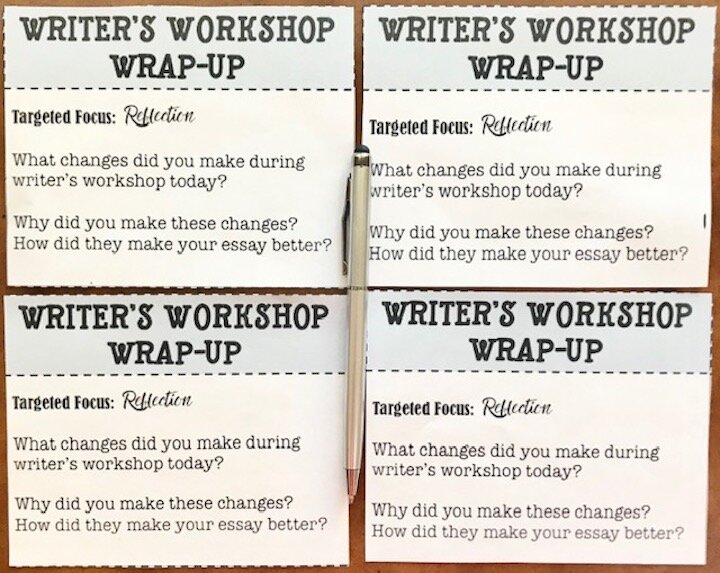
Writing Workshop Wrap-Up Task Cards from Bespoke ELA
CREATIVE WRITING
Teaching a creative writing unit or class? In this post , Language Arts Classroom writes about THREE creative writing assignments you can use with students; how-to articles, children’s books, and movie scripts.
And! Help students organize their writing with a creative angle: cookies! These graphic organizers will help students with brainstorming, narrowing ideas, and more.
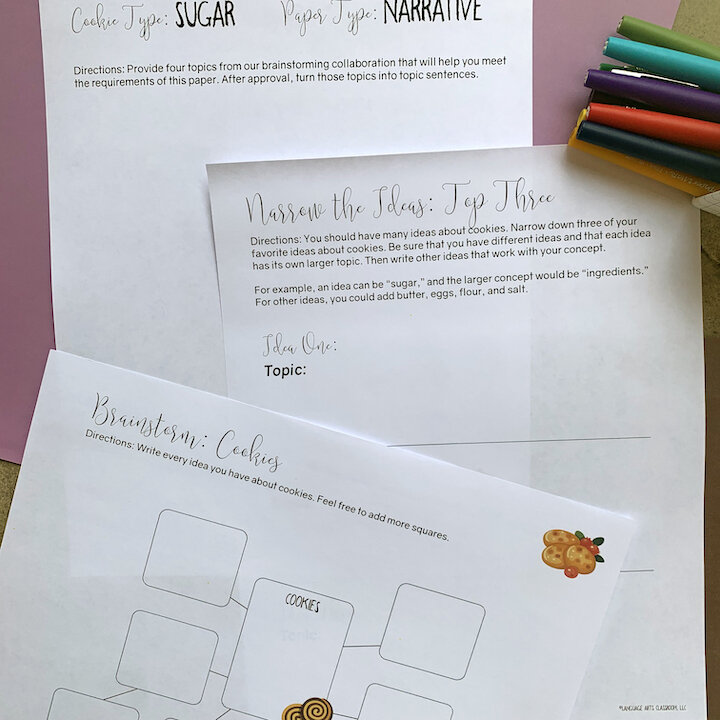
Cookie Organization Graphic Organizers by Language Arts Classroom
WRITING MINI LESSONS
One of the most popular ways to incorporate lessons that inspire secondary writers is writing workshop. The problem? Without training, it’s hard to figure out how to get started.
Amanda Write Now’s post covers various angles to consider when setting up a writing workshop. Specifically, this article features “how-tos” for FIVE of her favorite workshop mini lessons .

Writing Workshop Launch Lessons from Amanda Write Now
related posts:
Are instagram captions a teaching genre, 5 creative reading response activities, 10 unique and creative reflection techniques.

Poetry Center

Five Creative Writing Lesson Plans for Middle & High School Students
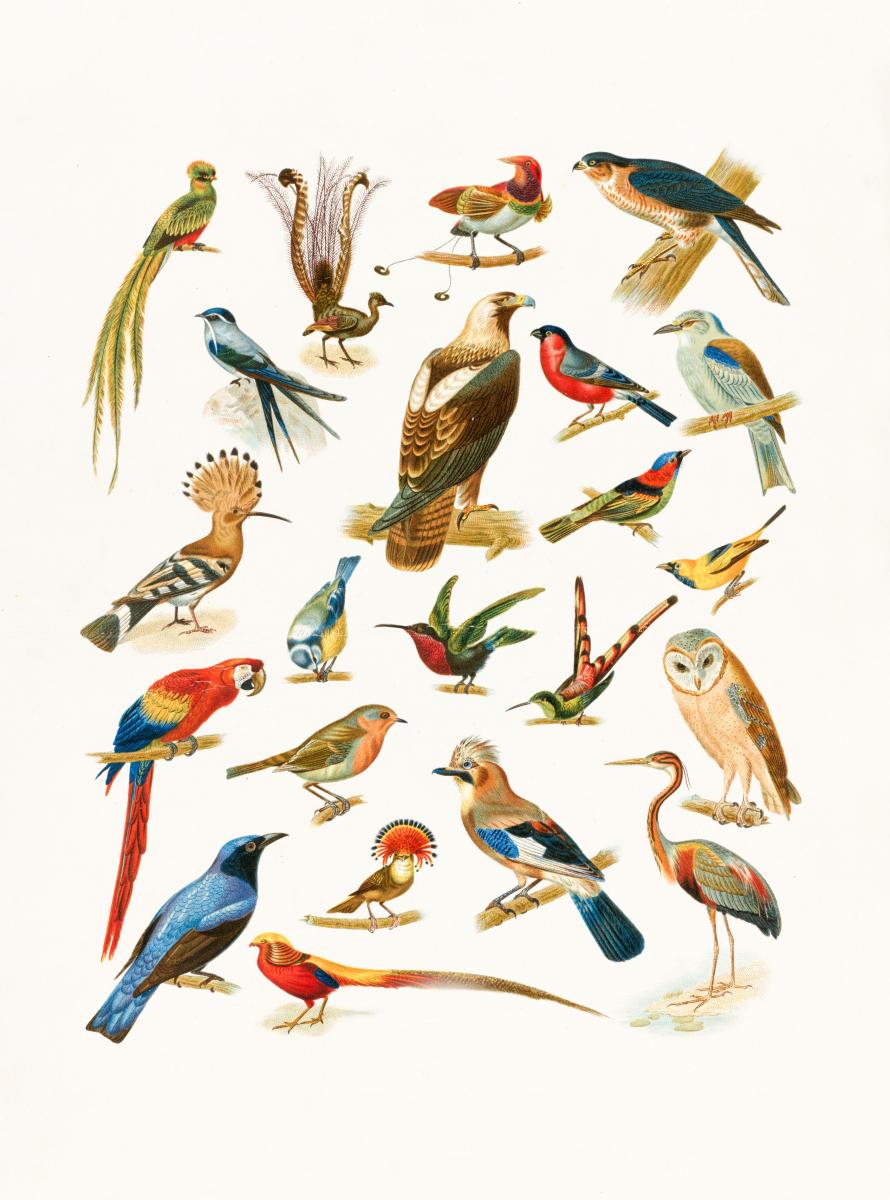
A Poem About Joy:
In this lesson plan, inspired by Ross Gay's "Sorrow Is Not My Name," Teré Fowler-Chapman asks young poets to come up with a list of things that bring them joy and then write a poem inspired by one of the items on that list. The writing exercise, which is a fantastic way to bring social-emotional learning into the classroom, is preceded by a conversation on Gay's poetics and on how joy can exist even in times of sorrow.
Personal Migrations:
Saraiya Kanning, inspired by Wang Ping's "Things We Carry on the Sea," asks young writers to, "contemplate how migration has played out in their own lives, including the lives of their families." This multi-part lesson plan includes a word association game, a discussion of Ping's poem, and a group poem in which students answer the question, "What sort of things have been carried across land, sea, or even across time?" collaboratively. After this, they write their own individual poems, using a series of questions to jump start their creativity, and then craft art pieces using popsicle sticks, pipe cleaners and/or puff paint to trace paths across the surface of their chosen canvas (Kanning used cake board!). This lesson can be shortened or spread out over class periods as part of a unit on immigration and migration.
Rare Bird Erasure:
"Erasure poems use words from another source to create a new poem," Saraiya Kanning writes in this lesson plan, which uses the field guide Rare and Elusive Birds of North America as a source text from which young writers create their own pieces (although you're welcome to use any book you'd like!). Each student receives a photocopied page from the book and goes on a "treasure hunt," selecting 5-10 words that in some way connect to one another. After creating their erasure poem, students can decorate the page with art materials to "create images, patterns, or designs around the words." This lesson plan includes a note on modifications for student with visual impairments.
Titles: Art on their Own:
So often in creative writing, the titling process is overlooked but important: as Sophie Daws says, "Writing a title can feel like putting the cherry on top of your great poem or it can feel like walking on eggshells, where the wrong title could ruin the whole poem and you just can’t come up with the right one!" This lesson plan, drawn from her high school zine residency, uses six prompts to offer a guided approach to coming up with a title for a finished project, from one that asks students to write down their favorite line to another that encourages them to think of how a title can add another tone or angle to their work.
Found Art Handmade Books:
Taylor Johnson bridges creative writing and visual art in this lesson plan, which focuses on crafting handmade books from recycled materials. Johnson suggests using everything from old postcards to yarn to insect wings to create a publication that's truly one of a kind. As far as words go, students can either add something they've previously written to their books whole cloth or cut up bits of their old writing and "remix" it. After the books are done, Johnson suggests creating a classroom library or exhibit for students to browse one another's books.
Image from the Boston Public Library.
Category:
Tags: .
- writing the community
Creative Writing Lesson Plans: From Paragraphs to Narratives
Return from Creative Writing Lesson Plans to Creative Writing Ideas and Activities
Would you prefer to share this page with others by linking to it?
- Click on the HTML link code below.
- Copy and paste it, adding a note of your own, into your blog, a Web page, forums, a blog comment, your Facebook account, or anywhere that someone would find this page valuable.
Helping You Write Across the Curriculum!
copyright 2009-2013 www.creative-writing-ideas-and-activities.com
- Writing Topics
- Writing Prompts
- Writing Ideas
- Writing Activities
- Lesson Plans
- Writing Tips
- Privacy Policy
Our Most Popular Pages
1. Teaching Resources
2. How to Write a Myth
3. February Writing Prompts
4. How to Write a Legend
5. Writing a Personal Narritive
6. Writing Fables
7. Writing Mystery Stories
8. Math Prompts
9. Science Writing Prompts
10. Elements of Persuasive Writing
Recommeded Resources:
AnyWord(TM) Spelling Practice Series!
Worksheets, games and activities to use with any spelling words. Three volumes in all!
Download yours today!
Stop Essay Pain!
LitWorks.com
Resources to help students prepare for literature examinations.
Teach Kids Drama!
Creative Writing Through Wordless Picture Books

- Resources & Preparation
- Instructional Plan
- Related Resources
Wordless picture books offer a wonderful foundation for creative writing. Often, students struggle with ideas and topics for writing. This genre of books offers a platform for students to develop their writing skills. In this lesson, students are exposed to wordless picture books and begin developing story lines orally and in writing. Educators can easily incorporate various instructional strategies into students' writing, such as use of dialogue, setting development, character descriptions, sequencing of events, and story development. An online, interactive story map is used to assist students in developing story lines.
Featured Resources
Interactive Story Map : Students will love this interactive resource that helps them generate story ideas.
From Theory to Practice
- David Wiesner (author of Tuesday ) identifies one of the most valuable characteristics of wordless books-the endless possibilities for creative interpretations.
- Wordless books enhance creativity, vocabulary, and language development for readers of all ages, at all stages of cognitive development, and in all content areas.
- The creativity stimulated by wordless books encourages older students to look more closely at story details, to carefully consider all story elements, and to more clearly understand how text is organized so that a story develops.
- Through discussion and critical examination of the details of the illustrations, students wrote sentences that effectively complemented the pictures.
Common Core Standards
This resource has been aligned to the Common Core State Standards for states in which they have been adopted. If a state does not appear in the drop-down, CCSS alignments are forthcoming.
State Standards
This lesson has been aligned to standards in the following states. If a state does not appear in the drop-down, standard alignments are not currently available for that state.
NCTE/IRA National Standards for the English Language Arts
- 1. Students read a wide range of print and nonprint texts to build an understanding of texts, of themselves, and of the cultures of the United States and the world; to acquire new information; to respond to the needs and demands of society and the workplace; and for personal fulfillment. Among these texts are fiction and nonfiction, classic and contemporary works.
- 3. Students apply a wide range of strategies to comprehend, interpret, evaluate, and appreciate texts. They draw on their prior experience, their interactions with other readers and writers, their knowledge of word meaning and of other texts, their word identification strategies, and their understanding of textual features (e.g., sound-letter correspondence, sentence structure, context, graphics).
- 6. Students apply knowledge of language structure, language conventions (e.g., spelling and punctuation), media techniques, figurative language, and genre to create, critique, and discuss print and nonprint texts.
- 11. Students participate as knowledgeable, reflective, creative, and critical members of a variety of literacy communities.
Materials and Technology
- You Can't Take a Balloon Into the National Gallery by Weitzmann and Glasser (Dial Books for Young Readers, 2000)
- Sticky notes (3 X 5 size, lined is preferred)
- Student response journals
- Various wordless picture books: Wordless Picture Books (Reading Rockets) and Wordless Picture Books (Book Riot)
Peer Critique Rubric
Preparation
Student objectives.
Students will
- Explore various wordless picture books
- Develop oral story lines for wordless picture books
- Develop written story lines for wordless picture books
- Critique story lines developed by peers
Opening activity
Read a wordless picture book to the class by developing a story line to go along with the pictures. After reading, ask students if they would have created a different story for the book. Reread the same book asking students to volunteer to develop a story line for each page. Explain how everyone can have a different interpretation of a book.
Paired reading
Group students in pairs to select and read a wordless picture book together. Students should have the opportunity to create their own story line for the book and tell the story to their partner.
Small-group activity
Gather three to four students in a small group to develop a story for the book You Can't Take a Balloon Into the National Gallery. Explain that the story line should be created as a group. Each group should read through the book first, discuss ideas, and then develop a story line to go along with the illustrations. The text for each page should be written on sticky notes and placed on the coordinating pages of the book.
Whole-class discussion
Invite each group to read aloud their original story for the book You Can't Take a Balloon Into the National Gallery. Discuss the similarities and differences between each group's interpretation of the story. During the discussion, help students identify the setting, main character, conflict, and resolution, and model how to use the interactive Story Map tool.
Response journal activity
Have students complete a journal entry in response to the whole-class discussion about story lines for You Can't Take a Balloon Into the National Gallery. Ask them the following questions:
- Which story line was your favorite?
- Why was it your favorite?
- What made it enjoyable?
Independent work
Students select a wordless picture book from the classroom library to read and develop an original story line. Using the interactive Story Map tool, students begin to write their story line by identifying the setting, main character, conflict, and resolution. Once students complete the online Story Map, each map should be printed and used as a guide to further develop their story. Stories should incorporate elements of writing that include, but are not limited to:
- Use of dialogue
- Setting development
- Character descriptions
- Sequencing of events
- Story development
Pair-and-share conference
Students share their story lines with another student for critique. Comments and suggestions are provided for further story development. Students use a Peer Critique Rubric to complete this task.
Independent revision
Any revisions that are necessary are made based on the pair-and-share conference.
Whole-class sharing
Students read their original story to the class.
How does the museum on the website differ from the museum presented in the book? What does the author do well in portraying the museum? What is the most realistic illustration or part in the book?
- Have students create Character Trading Cards for the characters in the stories they have written. These can have multiple applications - for example, students can exchange them and write their own original stories incorporating each other's characters or they can use them as a tool to help them revise their stories.

Student Assessment / Reflections
- Teacher observation of student participation in whole-class and small-group activities
- Journal response entries
- Calendar Activities
- Student Interactives
The Story Map interactive is designed to assist students in prewriting and postreading activities by focusing on the key elements of character, setting, conflict, and resolution.
Add new comment
- Print this resource
Explore Resources by Grade
- Kindergarten K
How to Effectively Teach Creative Writing in Elementary
Today let’s discuss how to effectively teach creative writing at the elementary level. Creative writing is such an important writing skill to teach students from a young age. Young writers need to understand the concept of creative writing as using their imagination to express themselves freely through words.
It’s not just about proper grammar and spelling (though those are important too!) , but rather about sparking their creativity , allowing them to dream up unique characters , exciting adventures, and incredible worlds. By nurturing their storytelling abilities early on, we’re not just helping them become better writers, but also fostering their confidence, encouraging self-expression, and igniting a lifelong love for writing. So, let’s dive into some strategies and tips to make your creative writing lesson plans a hit in your elementary classroom!

What is Creative Writing?
Creative writing is essentially writing in which the author uses his or her imagination to create a story. Creative writing in simple terms refers to the process of expressing thoughts, ideas and stories in a unique and imaginative way.
It’s about letting children’s minds wander freely, encouraging them to use their imagination to create characters, settings, and plots. Creative writing isn’t just about grammar and spelling; it’s about fostering a love for storytelling, allowing kids to explore their creativity, and helping them find their voice through words on paper. It’s a journey that encourages self-expression, builds confidence, and nurtures a lifelong appreciation for writing. The whole purpose of creative writing is to think outside the box and stray from traditional structures and norms.
Creative writing falls under one of the 5 categories of writing but it also combines a lot of these styles together:
- Narrative Writing
- Descriptive Writing
- Persuasive Writing
- Expository Writing
- Creative Writing
Creative Writing Lesson Plans Don’t Have to Be Difficult
Finding creative ways for students to write using their imaginations doesn’t have to be difficult. No matter the grade level, creative writing lessons should offer plenty of opportunities for students to tell their point of view on a subject. Don’t let creating lesson plans for creative writing be a headache! It’s all about giving kids the chance to let loose and share their thoughts in their own special way.
Whether they’re in 2nd grade, 3rd grade, or 5th grade, the key is to let their imagination run wild. Get them talking about what interests them, throw in some fun prompts, and watch the magic happen! Mix things up with different writing styles – stories, poems, even real-life tales. Make it a safe space where they feel free to jot down whatever comes to mind. By balancing a bit of structure with loads of creative freedom, teaching creative writing becomes a blast for both the teachers and the students!

Here’s How to Teach a Creative Writing Activity to Elementary Students:
1. start with creative writing prompts.
One of the first activities you can try is using writing prompts with students. Writing prompts are a great tool to get students’ brain juices flowing, no matter if they are elementary, middle school, or high school students! Coming up with writing topics for younger students can be especially challenging sometimes.
Inside the How to Write a Paragraph Year-Long Bundle there are specific writing prompts that are scaffolded and differentiated to meet all learner’s needs. You will find everything you need inside this resource to help your students who struggle with writing understand how to write a paragraph all YEAR LONG … trust us! It allows for easy planning for your writing lessons because it’s got different seasonal writing resources and prompts inside no matter what time of year it is. These are the perfect place to start to get your students writing based on themes.
Once they are comfortable in this category, then it’s time to actually get them to come up with some of their own ideas to write about now (after all that is the ENTIRE point of a creative writing lesson!)
Try with these juicy writing prompts below to help get your student’s creativity flowing if they need help coming up with a topic to write about :
- Personal memories: “Tell about someone who taught you something really important.”
- Imaginative scenarios: “Let’s create a wild story set in a world where anything goes!”
- Prompts based on a familiar mentor text: “What if your favorite book ended differently? Give it a new twist!”
- Lead-in sentences: “I saw myself in the mirror and couldn’t believe what I saw. Overnight, I…”
- Fascinating or thought-provoking images with a directive: “Who do you think calls this log cabin home? Tell us their story and what they’re up to!”
2. Break Down the Prompts Together
Do NOT rush this next step! We need to make sure our students are coming up with unique and creative writing ideas. During this first week’s lesson plan, you want to make sure students know exactly what they are getting themselves into with the creative writing process. Make it known that these prompts above are to help guide them and their imagination. Help to break down what each prompt is asking/ looking for:
For example, if the prompt says “I saw myself in the mirror and couldn’t believe what I saw. Overnight, I…,” then what questions should the students be asking?
Hopefully, they will tell you they want to know what they look like in the mirror right now.
Then you can have students think of 5 possible situations for what happened and how they look.
3. Do a 5 Minute “Free Write Brain Dump”
During the next step of a creative writing lesson plan, encourage students to do a brain dump in their writing journals on all of their prior knowledge on the subject that they will be writing about. This lets you know a couple of things as the teacher: Do they have their own experience on this topic and enough background knowledge? Does the subject areas that they are free-writing about make sense for the creative writing topic? This should only take about 5 minutes and you are NOT worried about spelling or grammar during this step.
For example: if they are planning to write about the solar system but they don’t have much to say during this free write brain dump, this is where you may want to incorporate a mini lesson or guided conference with you to make sure they are picking a topic that they have a lot of background knowledge about or can at least figure out where to find the answers they might need for their writing.
The “free write brain dump” is helpful for students to see a couple of things- okay I know enough information about this topic and am ready to organize my thoughts OR I had a hard time just coming up with random thoughts to write about…maybe I need a need a new topic. It will truly help decide their confidence factor for this assignment.

4. Start Your Planning Process
The next step in your creative writing unit should be having students take their decided-upon creative writing topic and organize their thoughts and ideas. This step is super important because you want the information to be in the students’ own writing but you also want to make sure they have a plan for how to get their point across. Your stronger writers may be ready to go but some may need a bit more structure set up to help them.
There are a couple of different ways they can organize their ideas:
Use Graphic Organizers
Graphic organizers are the perfect thing to use if students want to stick with a paragraph-type writing structure. For your lower writers, this might be the way to go because graphic organizers make planning a lot easier and the structure makes it super easy to follow. Graphic organizers also help break down the writing process into chunks so it doesn’t feel like such a difficult task to students who may struggle more with their writing skills or for ESL students.
Character Development Worksheets
Provide worksheets that prompt students to describe the characters in detail that they want in their story. Include sections for physical appearance, personality traits, motivations, and character arcs. This helps students develop well-rounded characters before they start writing.
Peer Brainstorming
Organize small group brainstorming sessions where students can share their ideas and receive feedback from their peers. This way can totally help students polish up their ideas and come up with fresh new ones for their creative writing.
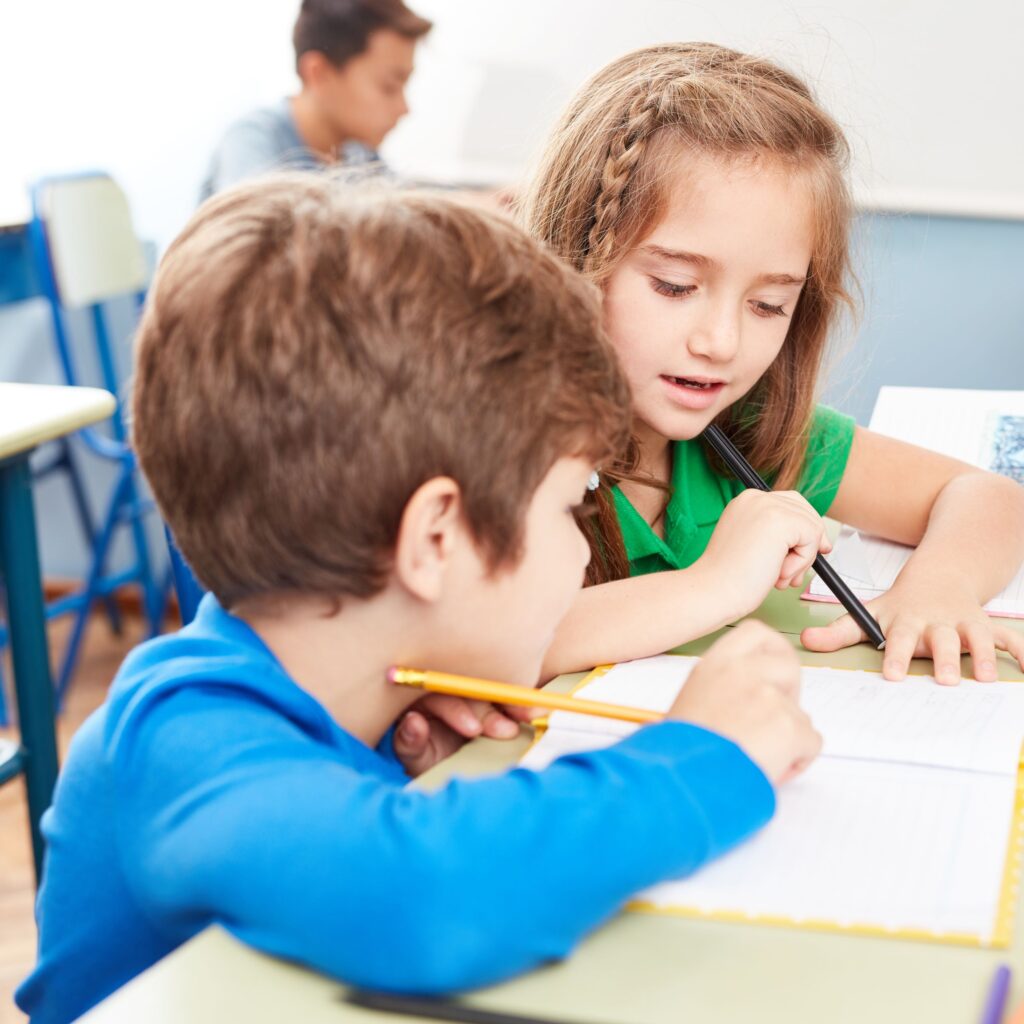
Story Boarding
Encourage students to create a visual storyboard for their story. They can draw a series of pictures or scenes that outline the plot, helping them visualize the sequence of events in their narrative. We really love this idea for planning for students who are learning English as a second language and students who have more difficulties communicating their thoughts out loud.
Voice Recording
Finally, one last idea: If your students are feeling unsure about writing things down, suggest they talk it out and record their thoughts on a device such as a classroom iPad.
They might be amazed at how easily their spoken words turn into great written stuff on the page! This is another favorite of ours for those students who struggle with getting their thoughts on paper or are learning English as a second language.
During the planning phase , it is a good time to take the opportunity to do any mini lessons you feel needed with students on any of the skills above.
5. Write the Rough Draft
Next is taking the creative narrative and putting it into a rough draft version using their planning method. It’s time for them to start coming up with their own creative short story. Do they have a main character? Is there a problem and solution? Does the writing make sense? After the rough draft, it can be super beneficial to meet with students individually or in small groups to give feedback before they move forward on the final copy.
Word of advice: Don’t worry about spelling or grammar too much in the rough draft phase! Just help students get their thoughts out onto paper!
6. Time To Write the Final Draft
As the creative writing journey nears its conclusion, it’s time to guide your students toward the crucial phase of crafting their final drafts. This stage marks a shift towards independent work, where students take ownership of refining their narratives. Encourage them to enrich their stories with vibrant sensory details to help bring the writing to life.
This isn’t just about polishing; it’s about infusing their words with emotions and imagination. The final draft represents all of their hard work! Make sure you help them reach their fullest potential with their creative writing and storytelling skills!
A Final Word on Teaching Creative Writing to Elementary Students
When planning your creative writing lesson plans for the school year, it’s best to think about the overall entire writing process. For students that you KNOW creative writing will be a challenge for, take some time during English language arts sessions and work with them on the simple structures of writing to help build their confidence. If they struggle with the mechanics and confidence to write, they honestly may not be ready for the creative writing process just yet. Use the resource below to help them refine their writing skills so that all of your students can be a confident and creative writer!

How do you feel about creative writing lesson plans?
You might also like:.
FREE Differentiated Creative Writing Prompts for Fall
Excuse our digital dust! We’re busy renovating this website to make it even more fabulous. Stay tuned!
- Read more about: Writing
You might also like...
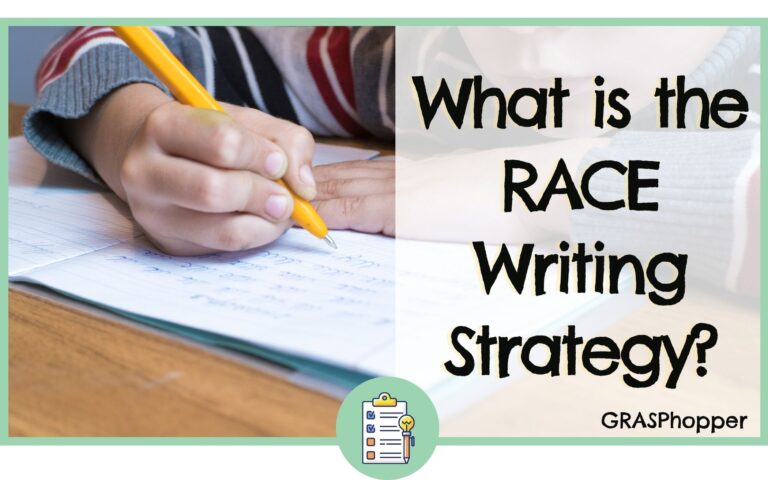
What is the RACE Writing Strategy?

The Best Paragraph Writing Worksheets for 5th Grade
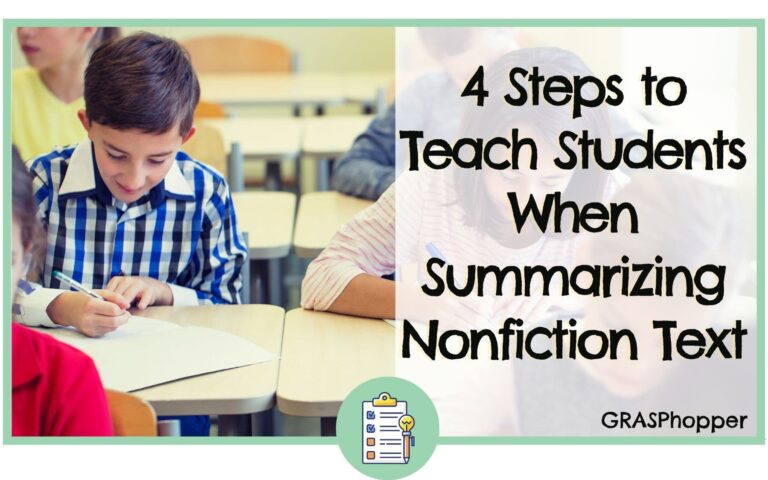
4 Steps to Teach Students When Summarizing Nonfiction Text
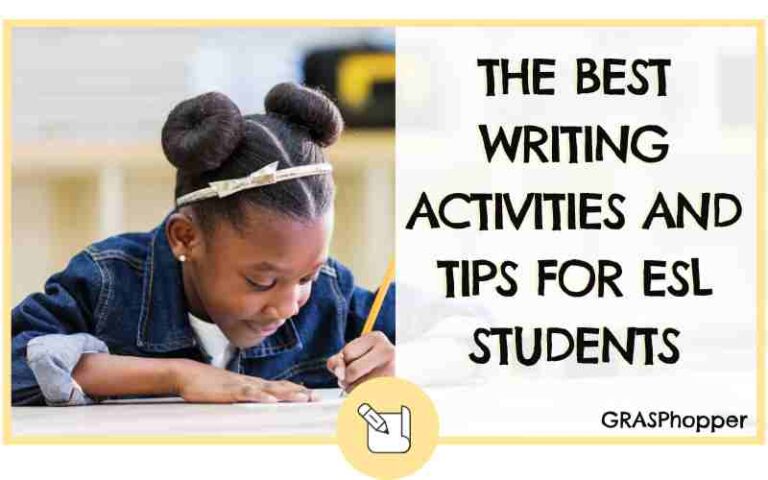
The Best Writing Activities and Tips for ESL Students
Teach smarter, not harder join the newsletter.
Transform your teaching with our teaching tips, resources, and freebies delivered straight to your inbox!

The Goodies
© GRASPhopper Learning • Website by KristenDoyle.co
We use essential cookies to make Venngage work. By clicking “Accept All Cookies”, you agree to the storing of cookies on your device to enhance site navigation, analyze site usage, and assist in our marketing efforts.
Manage Cookies
Cookies and similar technologies collect certain information about how you’re using our website. Some of them are essential, and without them you wouldn’t be able to use Venngage. But others are optional, and you get to choose whether we use them or not.
Strictly Necessary Cookies
These cookies are always on, as they’re essential for making Venngage work, and making it safe. Without these cookies, services you’ve asked for can’t be provided.
Show cookie providers
- Google Login
Functionality Cookies
These cookies help us provide enhanced functionality and personalisation, and remember your settings. They may be set by us or by third party providers.
Performance Cookies
These cookies help us analyze how many people are using Venngage, where they come from and how they're using it. If you opt out of these cookies, we can’t get feedback to make Venngage better for you and all our users.
- Google Analytics
Targeting Cookies
These cookies are set by our advertising partners to track your activity and show you relevant Venngage ads on other sites as you browse the internet.
- Google Tag Manager
- Infographics
- Daily Infographics
- Graphic Design
- Graphs and Charts
- Data Visualization
- Human Resources
- Training and Development
- Beginner Guides
Blog Education
27+ Easy-to-Edit Lesson Plan Examples [+ Writing Tips]
By Alice Corner , Dec 07, 2023

Lesson plans are the best way to deliver an effective and engaging lesson. Lesson plans also help keep you on track to ensure that your learners hit their goals and targets, in line with your course curriculum.
But sometimes in the high-pressure world of education, it can be difficult to find the time to create inspiring lesson plans on your own.
I’ve gathered together 28 of the best lesson plan examples on the internet that you can use to ensure your lessons are insightful and inspiring.
Table of contents (click to jump ahead):
What is a lesson plan?
What is included in a lesson plan, how to write a lesson plan, preschool lesson plan examples, math lesson plan examples.
- Science lesson plan examples
1. Objectives: know your destination
When writing a lesson plan, start by outlining the learning objectives—what you want your students to take from the session and work backward. Having clear and specific goals helps you plan activities for a successful lesson.
2. Welcome to the hook: make ’em want to learn
Start with an engaging “hook” to capture your students’ attention and make them eager to learn more. This could be a thought-provoking question, an interesting fact, or a surprising tidbit.
Apply a top-down method: plan on a course level the lessons you’re going to include and then go deeper and think about the activities you would like to include in each lesson.
3. Step-by-step: outlining the activities
Now that your students are hooked, it’s time to get down to business. Work on exercises or projects you would like your students to take on. These should serve two important purposes: allowing your students to apply the knowledge they learn in class and allowing you, the teacher, to assess students’ understanding of the materials.
This might include direct instruction (i.e., when you teach the material), guided practice (working together as a class), independent practice (students work on their own) and group activities. Think about the best way to engage students and make sure you include a variety of these activities besides just tests or exams, like quizzes, group discussions, group projects and so on.
Example: If your objective is teaching persuasive writing, your steps might look like this:
- Explanation of persuasive writing techniques and purpose
- Guided practice: analyzing persuasive texts as a class
- Independent practice: having students create a persuasive argument on a given topic
- Group activity: Debating the different arguments in teams
Remember the old adage: “Tell me, and I forget. Teach me, and I remember. Involve me, and I learn.”
4. Check for understanding: keep ’em on track
It’s not uncommon for students to zone out (we’ve all been there), so it’s crucial to regularly check if they’re on track. This means asking questions throughout the lesson and encouraging your students to reflect on the material.
Once you’ve got all these noted down, you can start arranging all the lessons and activities in a meaningful and logical order as well. This applies to the activities within a single lesson too. Answer these questions:
- How much time do you have for the whole lesson?
- What do you plan to start and end the lesson with?
- How much time do you have for each activity?
- If you still have time after all the activities are done, what are you planning to do?
- If you run out of time, what activities are you planning to drop?
As you plan your lesson, keep in mind that not all students learn at the same pace and in the same way. Tailor your activities and materials to accommodate different learning styles, skill levels and interests. This could mean offering choice in assignments, providing extra support for struggling learners, or challenging high-achievers with extended tasks.
Creating a preschool lesson plan involves careful consideration of the developmental needs and interests of young children. Shaping young minds is a rewarding experience, but it can sometimes feel like juggling too many balls at once.
With so many different essential key skills to teach, using a thorough Preschool lesson plan is important for making sure that your learners progress stays on track.
Break your Preschool lesson plans into learning sections
Preschool curriculums can be complex, covering multiple areas of crucial childhood development.
Help visualize each of these areas in their own right by creating a preschool lesson plan that takes a broad overview.
By breaking your lesson plan into learning sections, like this Preschool lesson plan example, you can get a glance at all elements of your students learning at once.
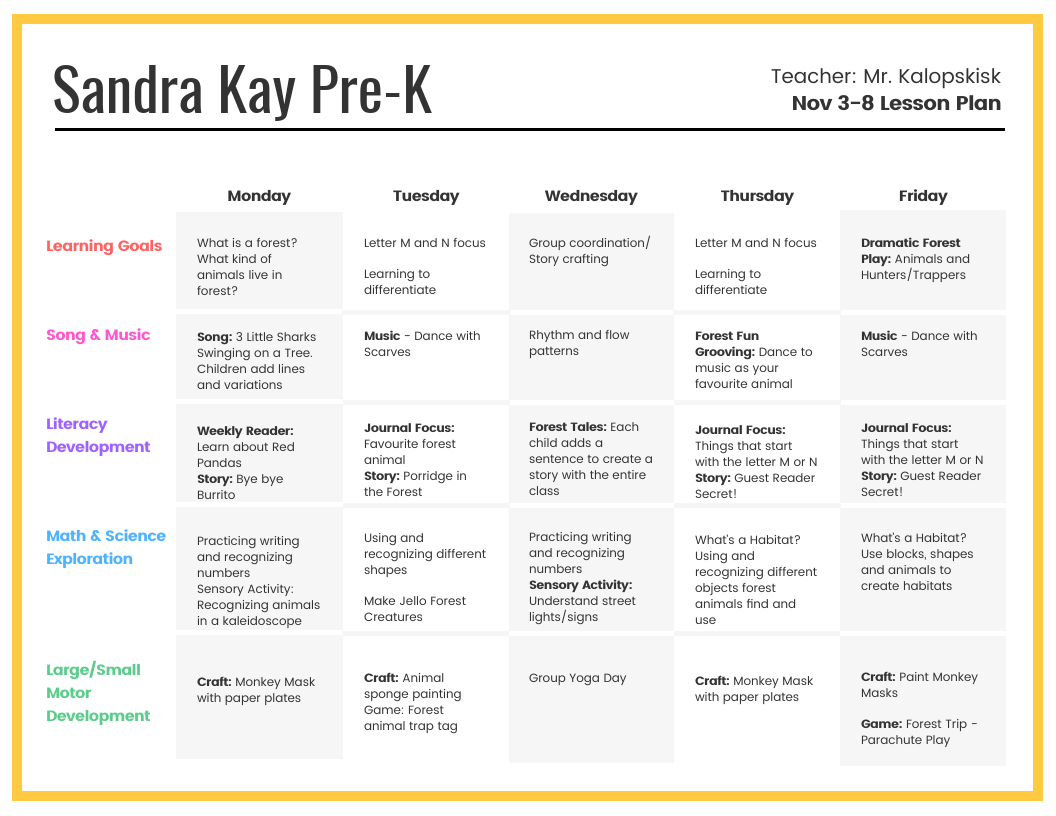
Get an overview of your week with a weekly lesson plan
A weekly lesson plan works great for preschool education planning, as it helps you identify and build lessons around common themes or goals. In the lesson plan template below, weeks have been broken down into different areas of focus.

Use icons in your Preschool lesson plan
Using icons is a great way to communicate visually. Icons are easy to understand, especially when you’re skimming a document.
Take this lesson plan template for example, not only do the icons help communicate the lesson themes, they also make the lesson plan example super engaging and fun.
Using icons can also be a great way to help students who struggle with non-visual learning. For more ways to improve your lesson accessibility, check out this guide to creating a Color Blind Friendly Palette .
Creating a math lesson plan involves careful planning and consideration of various elements to ensure effective teaching and learning. Check out these lesson plan ideas for writing the best math lesson plan, as well as some templates you can edit.
Use pops of color in your lesson plans
Just because your lesson plan tackles a complex subject doesn’t mean it has to be boring. In this lesson plan example a mint green color has been used to help break up the design. You could color code different subjects or units if you have multiple classes to teach.
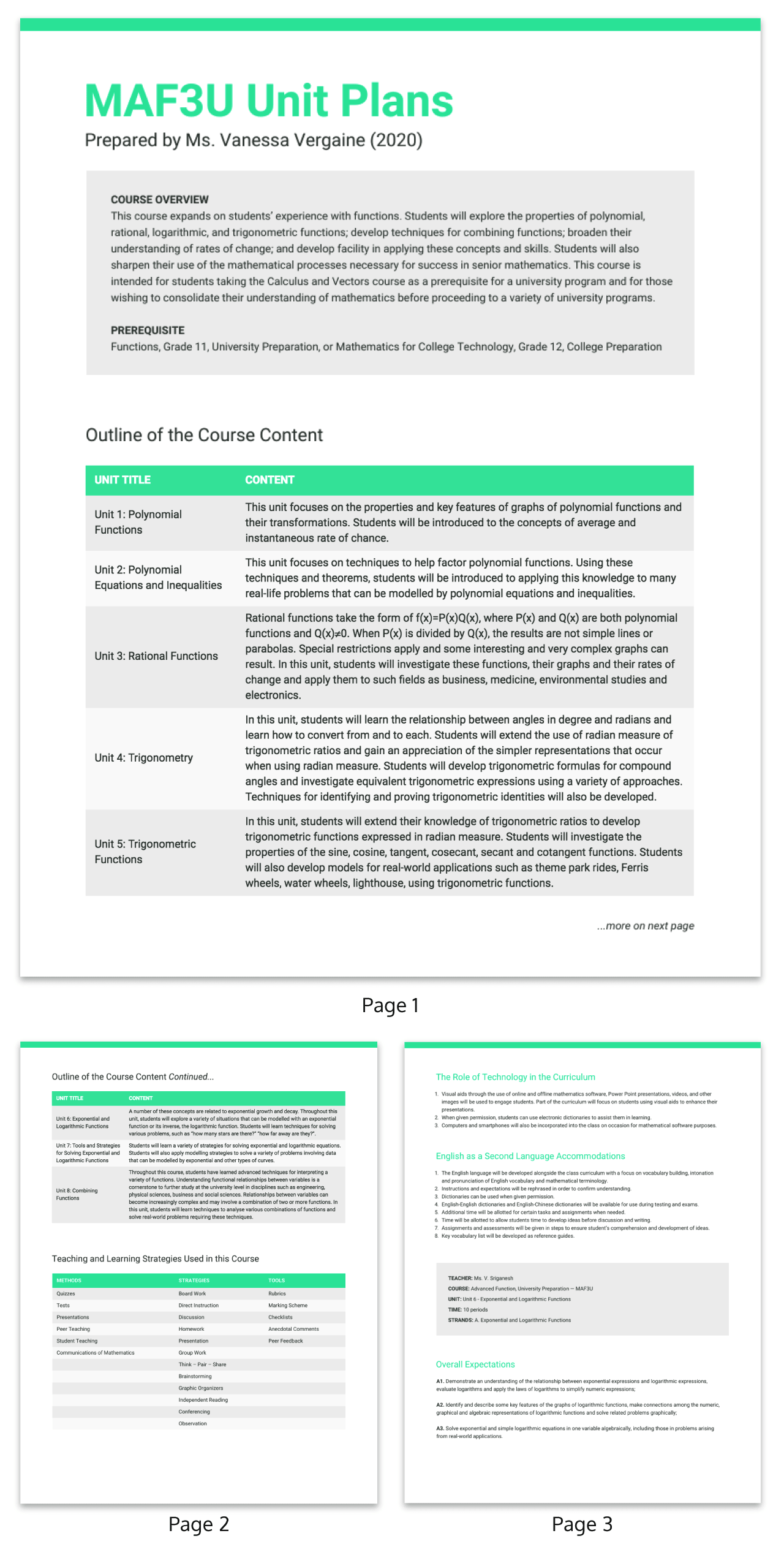
Break your lesson plan into sections to make it easy to follow
Being properly prepared for any eventuality in your lesson starts with good planning. By using sections, like in the lesson plan example below, you can cover all of your bases.
When lesson planning, consider the following:
- Lesson discussion questions
- Activity options for multiple group sizes
- Lesson notes or feedback
In this math lesson plan activity, the teacher has thought through all of the needs of their class.

Think outside the box when lesson planning
When lesson planning, the world, or at least the internet, is your Oyster. Instead of just teaching vocabulary, use scavenger hunts, word searches, or story activities.
Try picking a new activity and building your lesson around that. In the lesson activity example below, Merriam-Webster has a dictionary scavenger hunt that will keep students engaged and entertained throughout your English lesson.

Highlight your lesson objectives at the top of your lesson plan
Your learning objectives should guide your lesson planning, not the other way around.
In this sample lesson plan that focuses on analyzing a film for an English class, the learning objectives are housed within the same section as the lesson plan overview, right on the first page:

If you want to learn how to write an actional learning objective , check out this post on learning objective examples .
Science l esson plan examples
Planning a science lesson can mean anything from experiments to monitoring or diagramming and labelling.
Following a template, like in the science lesson plan examples below, can help make sure that your science lessons run smoothly.
Provide a space for reflection in your science lesson plan
Whilst a lesson plan is a place to schedule your activities, it can also be a great document to refer back to when planning future sessions. Adding a reflection section in your science lesson plan can be a great way to add notes about what worked and what didn’t within your lesson, for future reference.

Break projects down into sections of deliverables
If you’re conducting a difficult lesson, such as a hands-on science project, it can be handy to help yourself and your students by outlining expectations. A checklist can be a great way to make your science lesson plan as effective as possible.
In this lesson plan example, the deliverables have been broken into easy-to-follow checklists.

Use illustrations to bring your lesson plan templates to life
Your lesson plans should inspire you, not bore you! Using illustrations is a great way to bring your lesson plans to life.
In this sample lesson plan, the teacher has used colorful and playful illustrations to reflect the content of the lessons.

When creating Elementary school lesson plans, you need to make sure that you’re keeping a good overview of many different subjects at once.
Having a clear, easy to understand Elementary lesson plan, like in the examples below, is really important for making sure that all your learning objectives are being met.
Break your elementary lesson plans into day and subject sections
Elementary students will often be studying various topics and subjects at once and keeping an overview of this can be difficult. By creating a weekly lesson plan you can make sure that your students stay on track.
In this lesson plan template, subjects and activity have been split across the days, with simple summaries of each section within the lesson plan.

Include notes sections in your lesson plans
Planning a lesson is important, but reflecting on a lesson is essential. Adding notes sections to your lesson plans, like in this weekly lesson plan example, is a great way to remind yourself to evaluate as you go.
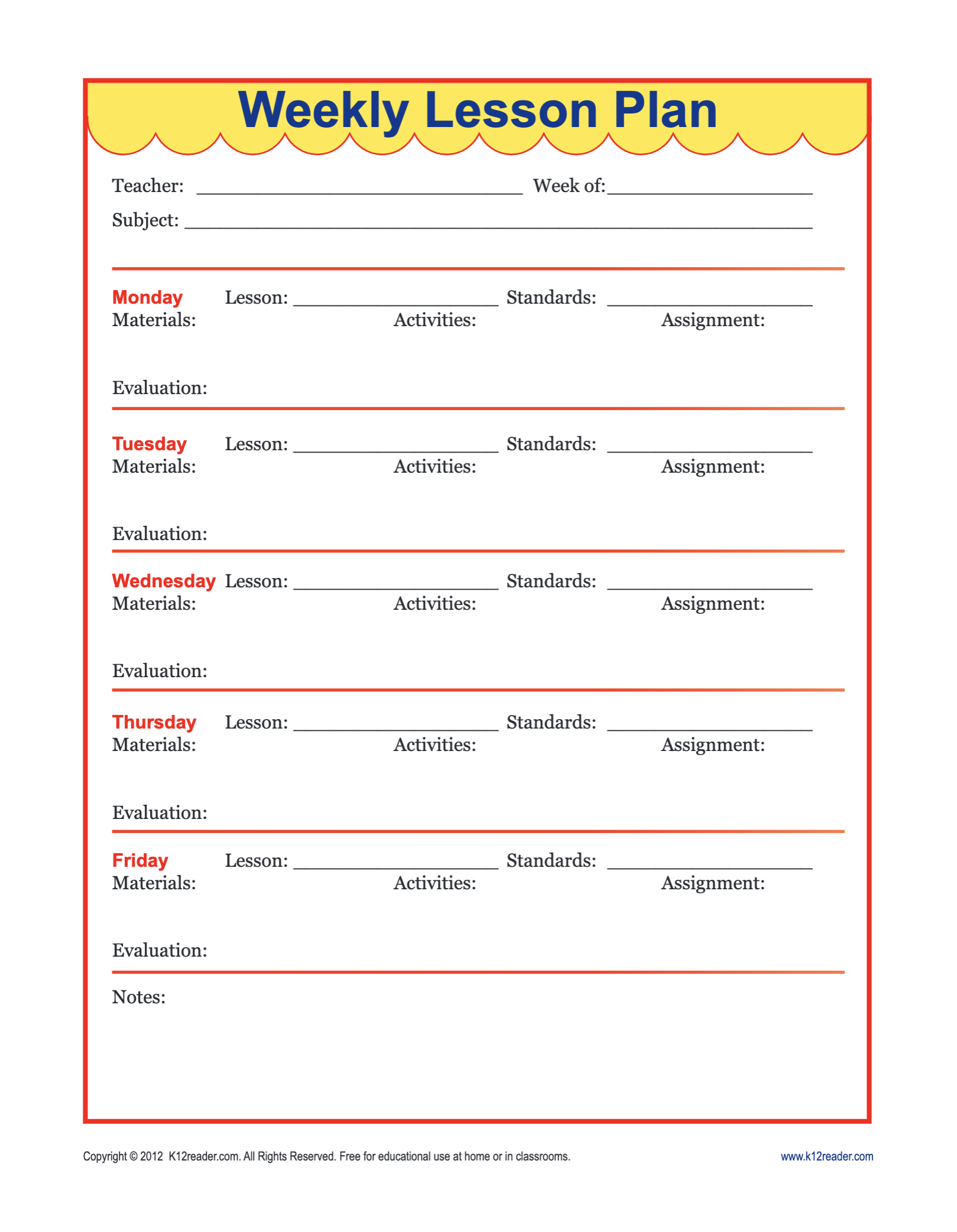
Evaluating yourself and your lessons can be a daunting task. Applying various evaluation strategies, such as a SWOT Analysis , is an easy way to give your evaluations focus.
Creating a high school lesson plan involves a more structured approach, as students at this level are typically engaged in more advanced academic subjects.
Ensuring that your High School lesson plans account for success and reinforcing skills is one way to deliver the best education for your learners.
Include indicators of skill in your high school lesson plans
In high school, lesson plans tend to be more advanced. In the high school lesson plan example below, the teacher has included a section for indicators of skill.
Indicators of skill are a great way to measure your students’ understanding of a topic and can be used to help inform your planning and teaching. Add two or three skill indicators into your lesson plans to ensure you know how to identify which students may need additional support from you in teaching.

You can also scroll back to the Math lesson plans section for more ideas on high school lesson plan templates.
Remember how I mentioned you should include timelines in your lesson plan? Well, for a high school lesson plan, you can include a timeline template like this one to make sure your students understand all the dates required for their school project:

When creating art lesson plans, use bright colors, patterns, icons and graphics to create a truly engaging visual art lesson plan, like in the examples below.
Art lessons lend themselves to creative and visual learning , so your Art lesson plans should be creative and visual as well.
Incorporate learning examples in your art lesson plans
Art lesson plans can be one of the most fun to create. Art as a visual medium lends itself to an exciting and decorative lesson plan.
In the art lesson plan example below, the teacher has inserted visual examples to use during the lesson directly into their lesson plan. Collecting all of this information in one place means that you can quickly refer back to your lesson plan mid teaching.

Be creative with your art lesson plan design
If you’re creating an art course, you’re probably a creative person. Why not let that creativity shine in your lesson plan templates?
Fun illustrations and patterns have been used in the lesson plan sample below to create a visually appealing lesson plan design.

When picking colors for your lesson plan design, some schools will need to be aware of color connotations. Certain colors should be avoided due to gang or rivalry associations. Some schools will also want to ensure that all materials produced fit within your school colors.
Use colors and patterns in your art lesson plan designs
As well as colors, patterns can be used, like in this art lesson plan example, to create interest in your lesson plan design.
Picking a patterned but simple background is an easy way to add depth to any lesson plan design.

When creating middle school lesson plans, like in the templates and examples below, it’s important to focus on success and simplicity.
Middle school is a time for make or break for many learners. Skills that they learn in middle school carry them through life and it can be a huge weight to carry. But teaching middle school can also be incredibly rewarding. Here are some tips to help you create an effective middle school lesson plan:
Make note of what success looks like in your lesson plan
In teaching, quite often the end goal is not for the students to just arrive at the correct answer, but to understand the process of getting there. Having this mentality in your mind whilst lesson planning is an excellent way to ensure your students are learning effectively and that you are maximizing your teaching impact.
Add a section to your lesson plans as to what success looks like for you and your students like in the Middle School lesson plan template:

Color code your lesson plan for ease of use
Colors can be a great differentiator in content and color-coding your lesson plans is a great way to make information pop. In this lesson plan example, each day has a different color which makes planning and evaluating much easier.

Related Reading: What Disney Villains Can Tell Us About Color Psychology
Creating simple lesson plans involves breaking down the content into manageable components and incorporating straightforward activities.
Sometimes simple is best—especially when it comes to lesson planning. When you’re panicked mid-teaching, having a simple and straightforward lesson plan that you can take a quick glance at it can be invaluable.
Keep your lesson plan simple for stressful situations
When performing under pressure, staying simple is usually the best option. Using a clean and modern lesson plan design is one way to ensure that you can stay focused on what matters: teaching.
Simple doesn’t have to mean boring, though. Using good design principles and following one or two graphic design trends means that your simple lesson plan template can still look smart.

Use an icon to help differentiate different subject lesson plans
Icons are an easy way to differentiate your lesson plans by subject or topic. In the lesson plan example below, a large book icon has been used at the top of the page so that you can quickly see that this is an English lesson plan.
You could use an icon for each subject you teach, or use icons to tell a story . You could even replace the icon with a photo of your lesson materials!

Use an action plan approach in your lesson planning
In the simple lesson plan example, the tasks in the lesson plan have been labeled as an “action plan” . By keeping the lesson plan design simple, the focus is really on the content of the lesson plan.
Creating an action plan when teaching your lessons is a great mindset for creating engaging lessons and proactive teaching.
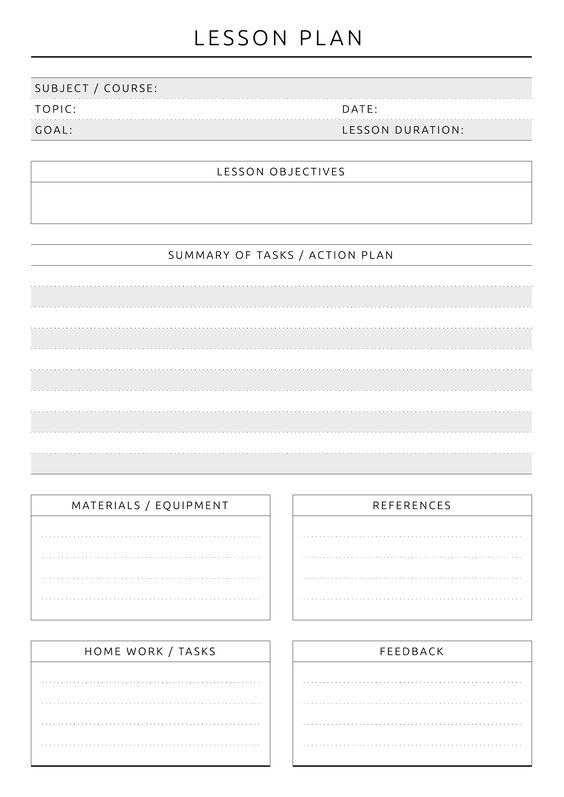
Creating an English lesson plan is the best way to keep track of all the learning strands and activities that are needed for learning success.
Imagination, drama, romance and tragedy. English lessons have it all. But they can also be complicated to teach, with many moving parts to any one lesson.
Like you’ll see in the English lesson plan examples below, creating engaging activities to a strict time schedule is perfectly possible with enough planning.
Use your lesson plan to schedule each activity by the minute
Any teacher will know the feeling of reaching the end of your material with 10 minutes left in the lesson.
Avoid running short (or running over!) in your lessons by planning down to the minute. The English lesson plan example below measures out timings for each activity so you finish perfectly on time.
You can use a timer on your interactive whiteboard , or get students to time themselves. Scheduling is a great skill to incorporate into any lesson plan.

Creating a history lesson plan is essential for a successful session no matter if you’re teaching the near past or the ancient history.
Using common teaching resources such as timeline infographics , or imaginative play and learning are exciting ways to make your History lesson plans exciting.
Prepare for history lessons with a history timeline infographic
Teaching history effectively and engagingly relies on the teacher’s ability to bring the past back to life. For some students, mentally visualizing history can be difficult. A timeline infographic is a great way to teach historical events.
When planning your history lesson, make sure you have all of your timelines sorted. You can either prepare your history timelines in advance or get the students to create their own history timeline as part of the lesson activity.
Venngage has a whole range of timeline infographic templates that are easy to customize.

Want to learn more about how to create a timeline infographic ? Check out the video below:
Use themes and historical events to enrich your lesson planning
When planning your history lessons, look for topical themes or historical events that you can anchor your lesson plan around.
In the lesson plan example below, the teacher is using Black History Month as an anchor point for their students’ learning.

Teaching the historical significance of Black History Monthand engaging students in related learning activities throughout February is a great way to contextualize current affairs. There are plenty of resources online to help create your Black History Month lesson plans.
Related Reading: Looking for other global holidays and events to theme your lessons on? Check this Ultimate List of Holidays .
Creating a kindergarten lesson plan involves similar principles to those used for preschoolers but with a bit more structure and focus on foundational academic skills.
We all know that meme “teaching kindergarten is like using a blender without a lid”. Staying organized is super important and having thorough easy-to-follow kindergarten lesson plans is one way to make sure your teaching stays on track.
Use themes to help plan your Kindergarten lessons
Help your kindergarteners embrace learning by using themes to plan their education. Themes are a great way to work through lots of different learning activities under one thematic umbrella.
This kindergarten lesson plan example uses St Patrick’s Day as its thematic anchor and bases Math, Art, Science and more off of one common theme.
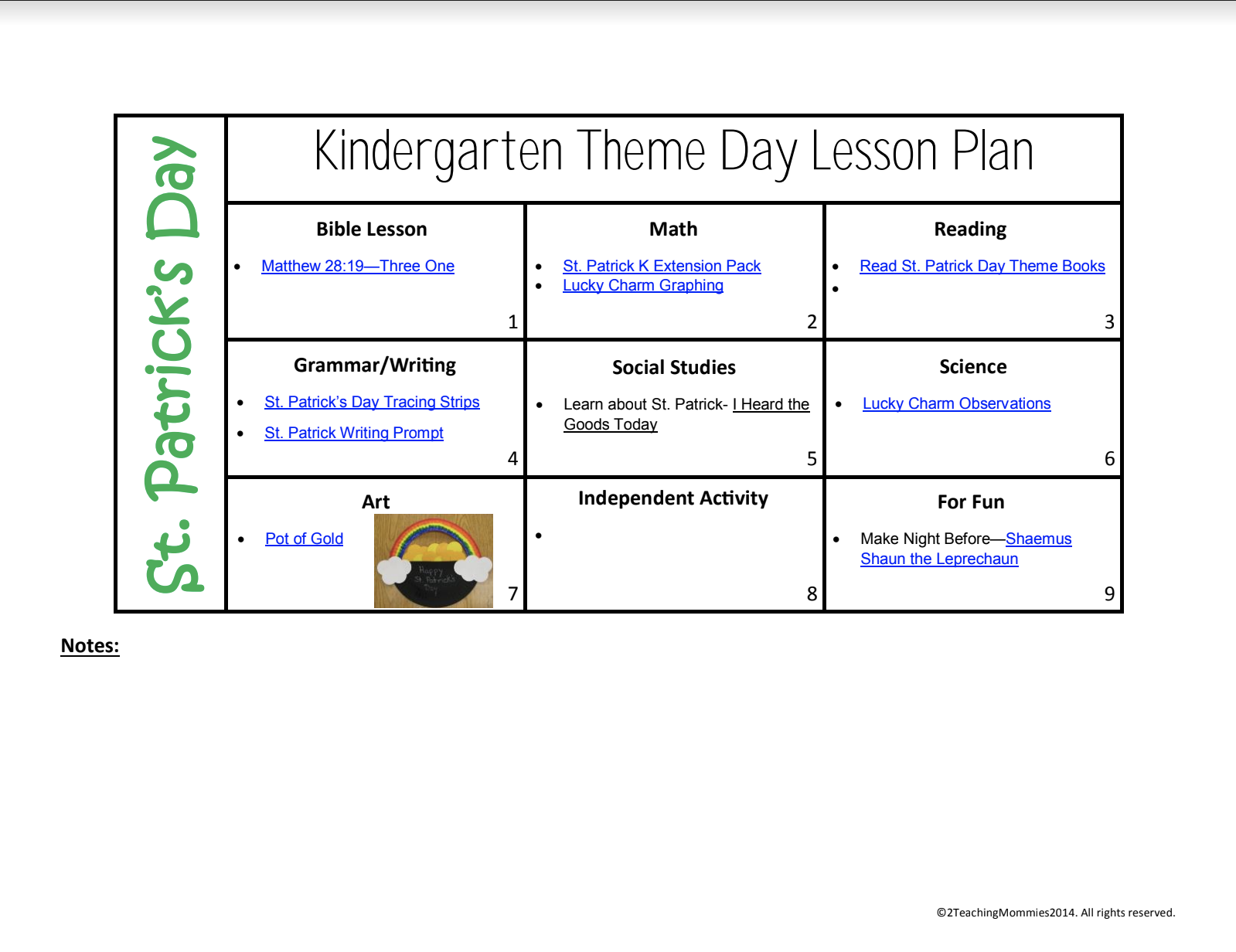
Make your lesson plans easy to skim
We’ve all been in a spot when our mind goes blank and we need to quickly refer back to our lesson plan. Especially if you’re interviewing or teaching in front of others.
By making your lesson plans easy to skim, you can quickly regain your train of thought and continue conducting a successful lesson.
In the sample lesson plan below the teacher has used simple blocks, checklists and icons to help ensure their lesson plan is easy to understand at a glance.

When creating eLearning , distance learning, remote learning, digital learning lesson plans—basically, anything outside the usual classroom setup—always be ready for its own set of unique challenges.
Engaging learners from behind a screen, or creating lessons that can exist outside of a traditional classroom environment can be difficult. But proper eLearning lesson plans can help you navigate non-traditional learning environments.
Break your eLearning lesson plan into activities or subjects
With so many people shifting to remote or digital learning keeping track of all of your separate subjects can be difficult. Creating an eLearning lesson plan that is broken into smaller chunks, with space for each topic, is an easy way to keep learning on track.
In this eLearning lesson plan example subjects are color coded and broken into small blocks.

For more examples of eLearning lesson plans, check out this post on course design templates .
Looking for more eLearning resources?
- 7 Ways to use eLearning Infographics
- Digital Learning Communication Resources
- What is an Infographic?
- 10 Types of Visual Aids for Learning
Use a daily schedule when learning remotely
Learning remotely can be a big change for both teachers and students. One way to keep your learning on track is with an easy-to-follow daily schedule. Using a daily schedule as a lesson plan, like in the example below, is one way to maintain a routine during difficult times.

As well as scheduling within your lesson plan, you can also create a calendar to help keep your students on track.
Allow time for creativity and fun in your lesson plans
One of the biggest benefits of eLearning, Remote Learning and Digital Learning is that you can stray from the confines of a traditional classroom.
Giving students the opportunity to explore topics creatively can be one way to engage your learners in difficult times. Every student will have a different learning style and by scheduling structured creative learning activities you can ensure that your entire class has the opportunity to thrive.
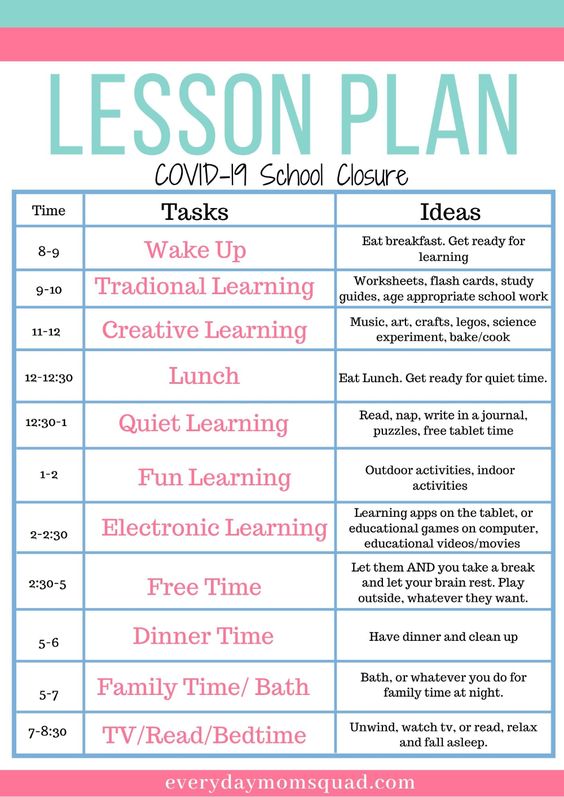
To sum up: Use a lesson plan template to write an actionable and easy-to-follow lesson plan
Writing a lesson plan from scratch can be difficult, which is why Venngage has created tons of lesson plan templates you can edit easily. You can also draw inspiration from the different lesson plan examples in this post to customize your lesson plan template.
Simply create a Venngage account, pick the template you want and begin editing. It’s free to get started.
- Try for free
12th Grade Creative Writing Lesson Plans
- Most Popular
- Most Recent


IMAGES
VIDEO
COMMENTS
An easy lesson plan for creative writing that will pay off later is to activate prior knowledge. Brainstorm creative, memorable, unforgettable stories with students. Share your thoughts too! You will start to build relationships with students who share the same tastes as you (and those that are completely different!).
The "I Remember" Poem. Students use personal experience to write creatively in this poetry lesson plan. They'll think back and choose a dozen…. Subjects: Reading and Literature. Poetry. Creative Writing. Download. Add to Favorites.
Creative Writing Lesson Plan. Dana teaches social sciences at the college level and English and psychology at the high school level. She has master's degrees in applied, clinical and community ...
Education.com offers creative writing lesson plans to kids of all ages. Teachers will find our lesson plans spark their classroom's imagination into artistic storytelling and writing. Our lesson plans are all purposefully themed so children can think outside the box when applying creative writing concepts. Don't delay the creativity - start now! .
First, please remember that any teacher can use these creative writing lessons. You don't need to be teaching homeschoolers. You can be a classroom teacher or a homeschool teacher at home with one student. You can even be a librarian who needs a fun program series. Second, I used these creative writing lesson plans with upper elementary ...
8. Out of a Hat. Teach your students about the components of different literary forms by discussing writing styles (narrative, expository, descriptive, and persuasive). Write each form on a small piece of paper and, you guessed it, toss it in a hat (or a bucket or any type of container).
Overview. To promote development, detail, and focus of ideas in students' writing, it sometimes helps to start with a fun, creative writing activity that encourages what you want to see in all of their writing. In this minilesson, students practice writing detailed, sensory-rich descriptions by framing a small piece of nature and freewriting ...
Dive into a spooky-type short story and character analysiswith "The Most Dangerous Game.". "Most Dangerous Game" Character Analysis Workbookfrom Teach BeTween the Lines. MAKER SPACE. This creative lesson to inspire secondary writers is a newer approach. Turn your writer's workshop into a maker spacewith these unique ideas from Spark ...
Here are five lesson plans from the 2022-2023 school year for middle and high school students, from our Writing the Community teaching artists!. A Poem About Joy: In this lesson plan, inspired by Ross Gay's "Sorrow Is Not My Name," Teré Fowler-Chapman asks young poets to come up with a list of things that bring them joy and then write a poem inspired by one of the items on that list.
A flexible creative writing lesson plan supports all the writing genres, from narratives to poetry (and everything in between!). Whether you're looking for quick, usable ideas to help your students compose stories, biographies, personal or business letters, reviews and editorials, essays or poetry, browse through the links below.
Students were able to build their reading and writing skills and strategies to ultimately produce a unique book. 1. Secure multiple copies of You Can't Take a Balloon into the National Gallery. 2. Secure copies of a wide range of wordless picture books, gathering at least one book for each student. The following Web resources provide a listing ...
A Final Word on Teaching Creative Writing to Elementary Students. When planning your creative writing lesson plans for the school year, it's best to think about the overall entire writing process. For students that you KNOW creative writing will be a challenge for, take some time during English language arts sessions and work with them on the ...
Objectives: know your destination. When writing a lesson plan, start by outlining the learning objectives—what you want your students to take from the session and work backward. Having clear and specific goals helps you plan activities for a successful lesson. 2. Welcome to the hook: make 'em want to learn.
Creative Writing Lesson Plans. This indicates resources located on The Teacher's Corner. Help students with creative writing. Pull several desks into a circle (4-7 students works well). Each student gets a blank sheet of paper and pencil. Thee put their name on the back of their paper. Students start to write a story about any topic.
Skill Builders: Word Analogy Questions, Week 25. Week 25: Word analogies to sharpen students' thinking skills and prepare them for standardized tests. Browse our printable 8th Grade Creative Writing Lesson Plans resources for your classroom. Download free today!
Ideas for a Creative Writing Course Plan Creative Writing Lesson Plans and Activities Primary/Elementary School ... Combine the project with an art lesson, asking students to include photographs or drawings of their past experiences. Base the size of the project on
The "I Remember" Poem. Students use personal experience to write creatively in this poetry lesson plan. They'll think back and choose a dozen…. Subjects: Reading and Literature. Poetry. Creative Writing.
The common ground of fiction and non-fiction writing is the creativity the writer uses to express his or her thoughts and emotions. The following examples show that, to some degree, all writing is creative, since it always involves re-creation, ie. the selection of some components, imagined or real, and exclusion of others. 1.
Lesson Plan in Creative Writing Grade 12 - Free download as Word Doc (.doc / .docx), PDF File (.pdf), Text File (.txt) or read online for free. The document outlines a lesson plan for teaching the elements of a short story to 12th grade students. It includes learning objectives, subject matter, and a detailed lesson proper divided into preparation, presentation, discussion, application, and ...
I. OBJECTIVES At the end of the 60-minute lesson, the students will be able to: a) differentiate imaginative writing from other forms of writing; b) cull creative ideas from experiences; c) understand why creative writing is important to be studied, and, d) construct creative compositions based on the principles of creative writing.
A Detailed Lesson Plan in Creative Writing 12 (First Quarter of School Year 2019-2020) I. OBJECTIVES At the end of the lesson, the students are expected to: 1. Differentiate imaginative writing, technical writing, and creative writing; 2. Express one's emotions and ideas through writing; and 3.
W1 English 9, September 13-16, 2021 Lesson Plan Preview text Republic of the Philippines Department of Education Region Division of Samar District of Villareal 1 Igot National High School School I. 303607 Igot, Villareal, Samar Villareal, Samar Detailed Lesson Plan In Creative Writing Objective: Use imagery, and specific experiences to evoke ...